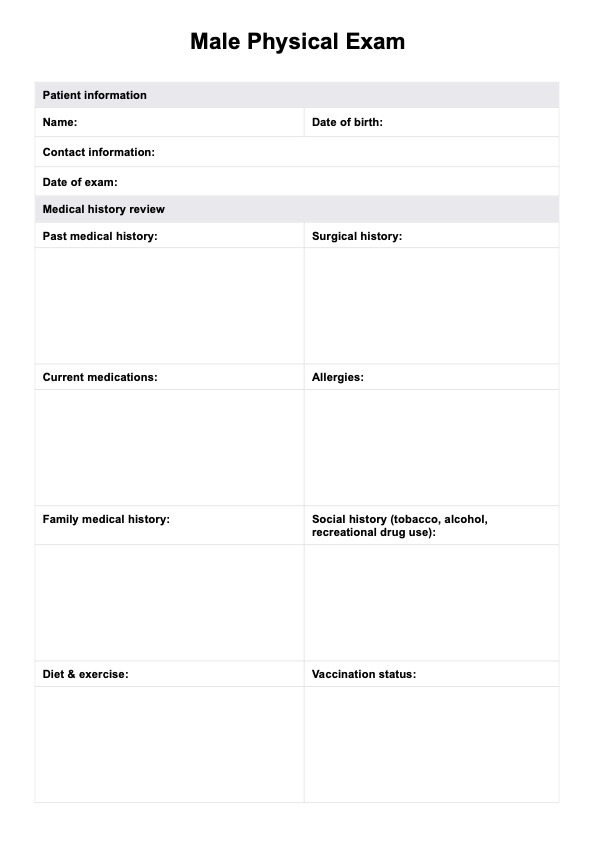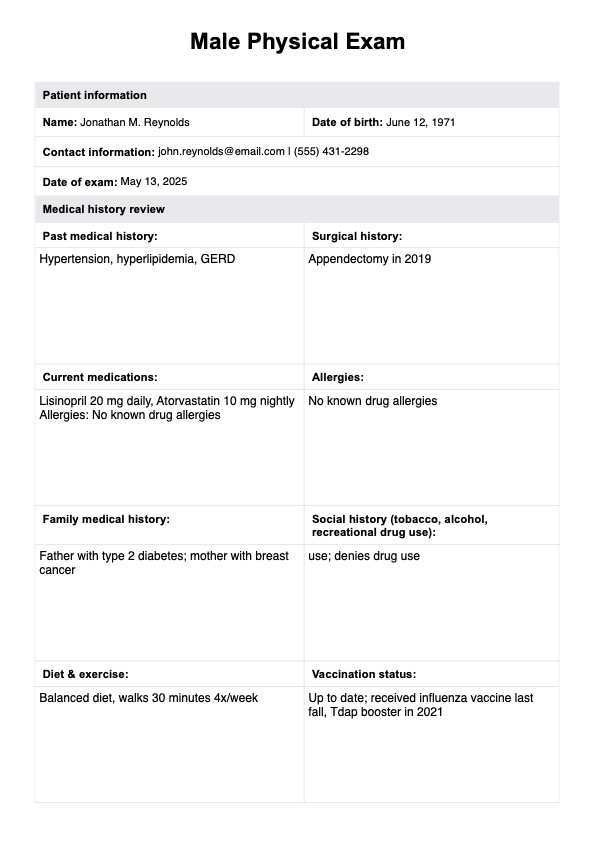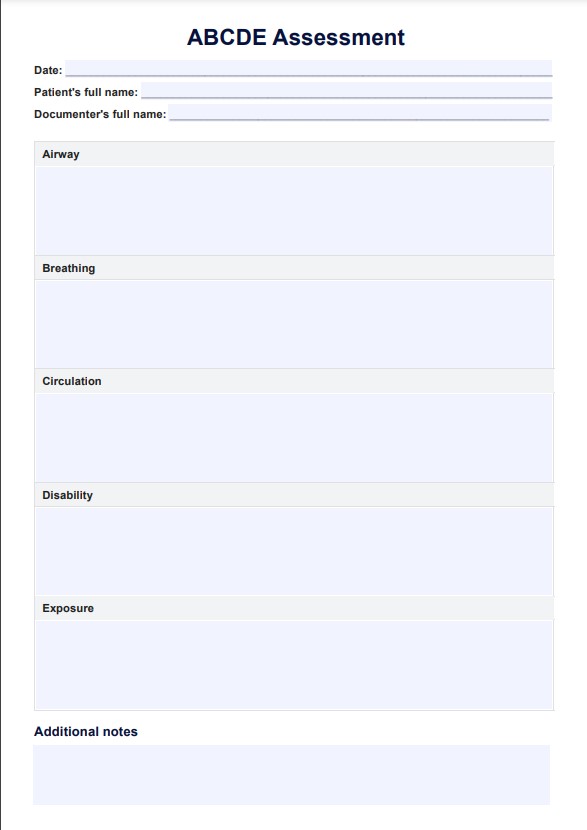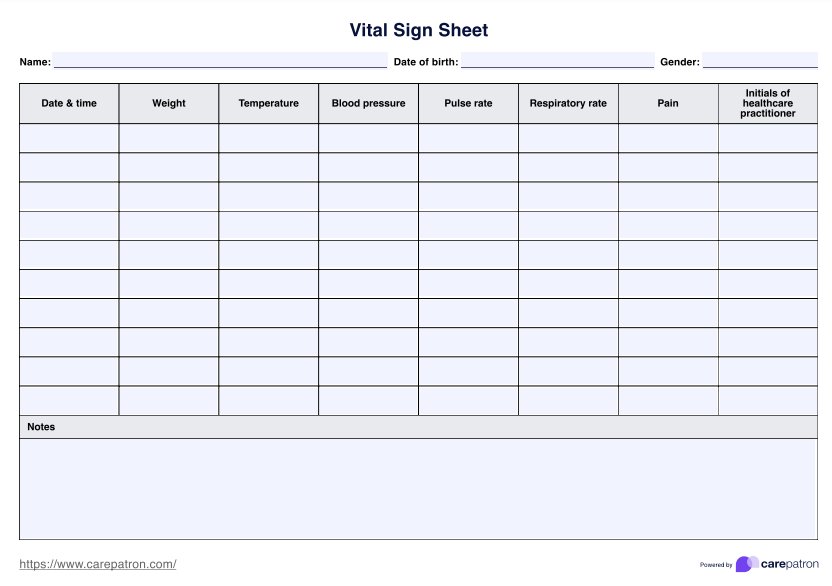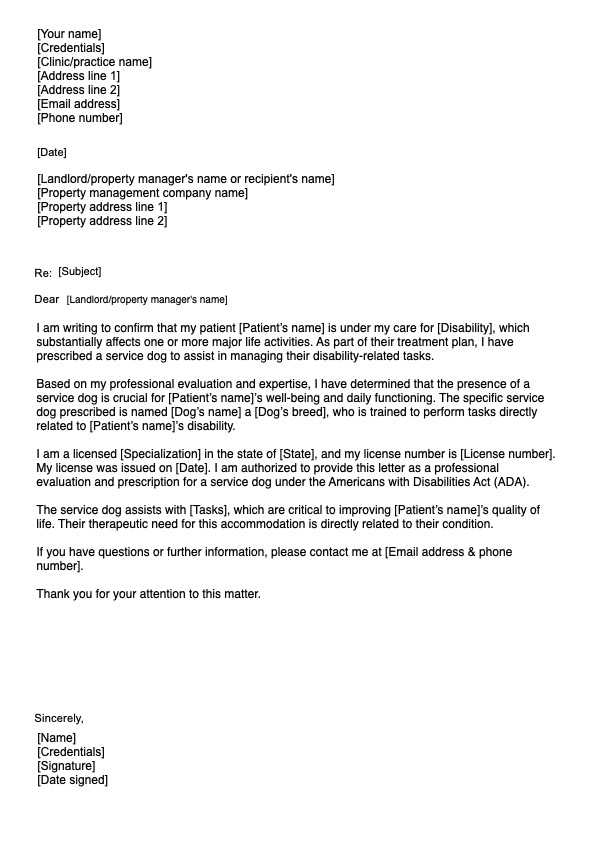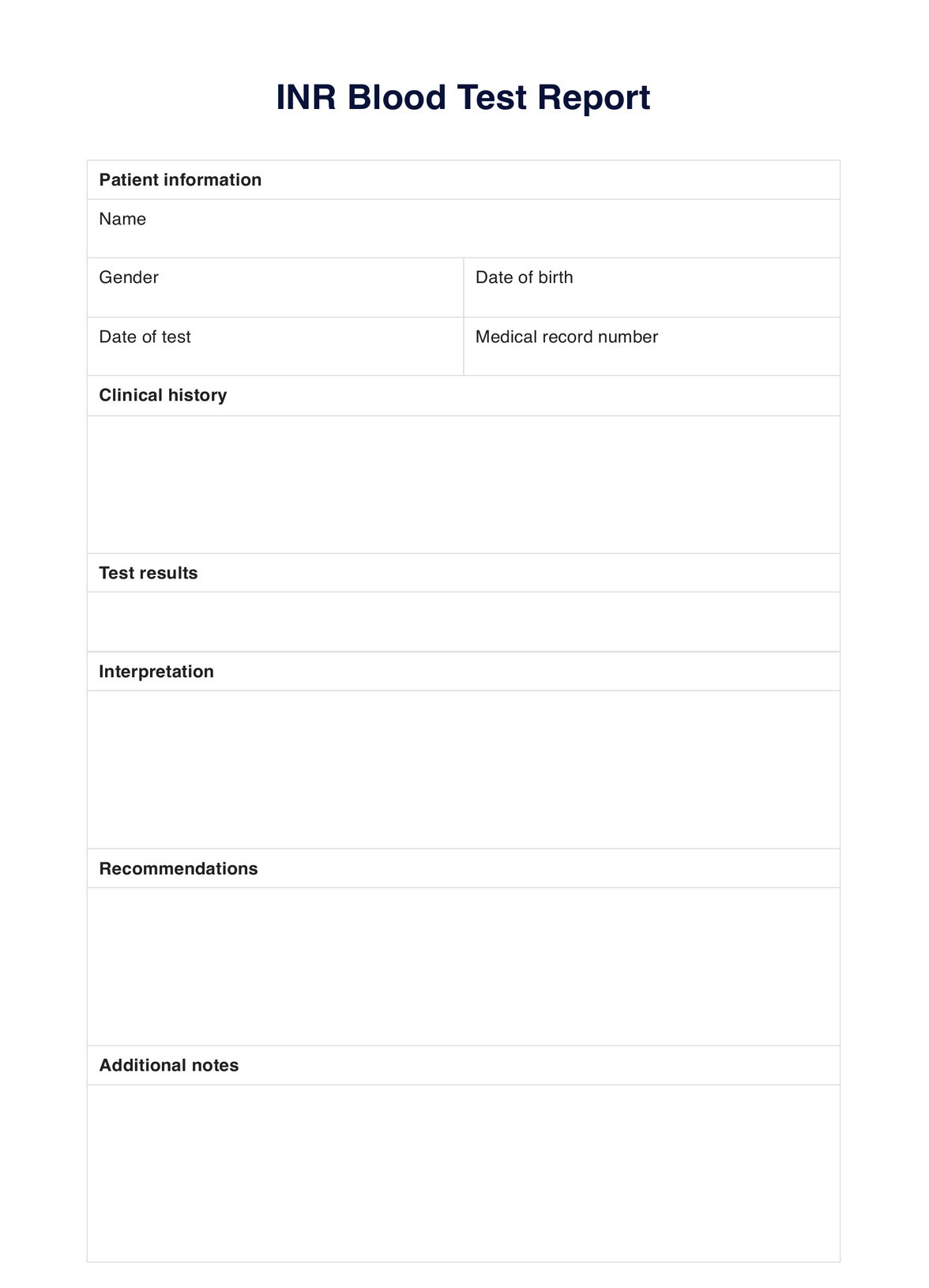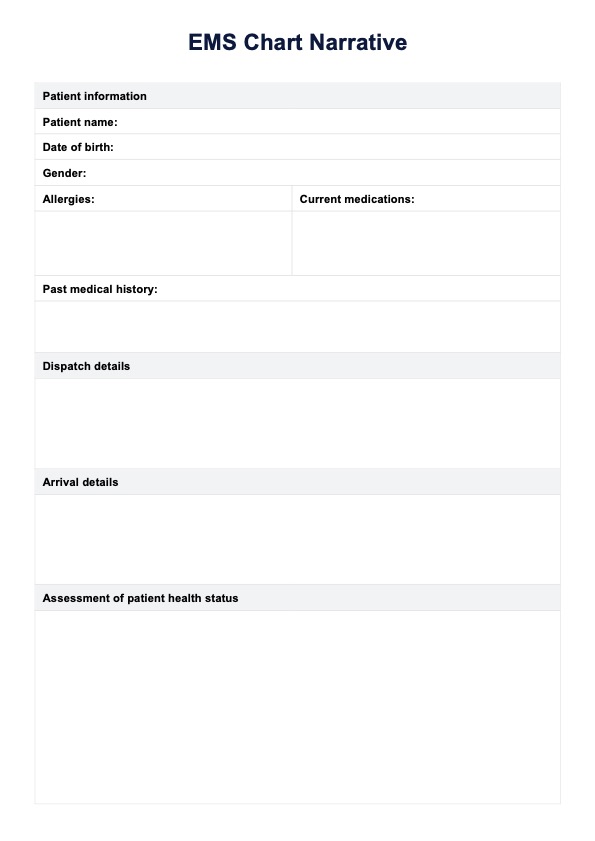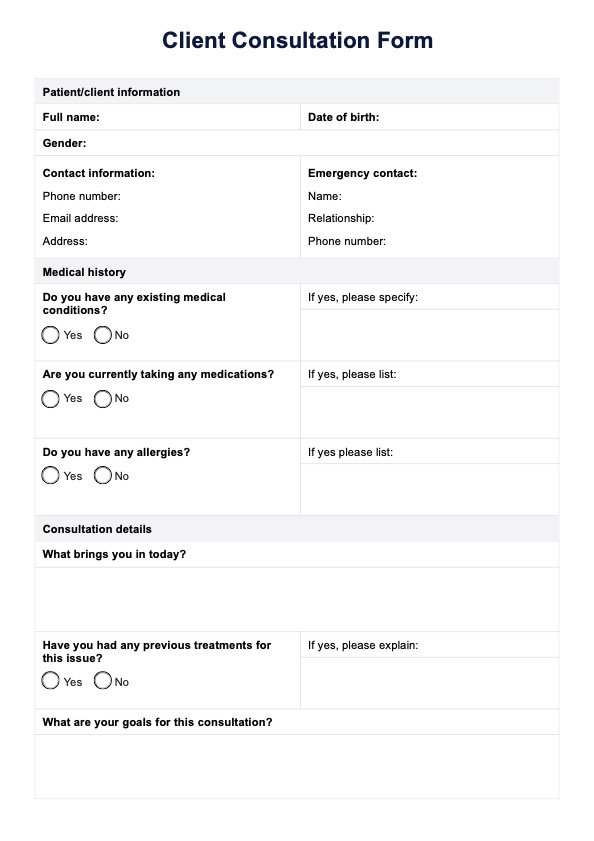Male Physical Exam
Prioritize your well-being with comprehensive Male Physical Exam services, ensuring proactive healthcare for men. Schedule your appointment for a thorough examination today.


What is a Male Physical Exam Template?
A Physical Exam Checklist Template is a comprehensive resource designed to streamline and standardize physical examinations, and a Male Physical Exam Template is specifically developed for men. Tailored for healthcare practitioners, this resource ensures a systematic and thorough assessment of a man’s overall health, especially during an annual physical exam.
The template may vary, but it typically encompasses critical components essential for a comprehensive male physical examination, blood test, and cardiovascular, respiratory, gastrointestinal, and musculoskeletal systems. It is a checklist of vital signs, such as high blood pressure, heart rate, and respiratory rate, ensuring that no crucial aspect is overlooked during the examination.
Beyond the physical aspects, the template may include sections for family medical history, lifestyle factors, health risk factors, and specific risk assessments pertinent to men’s health, such as testicular and prostate cancer screening.
Male Physical Exam Template
Male Physical Exam Example
How does it work?
The Male Physical Exam Template is easy to integrate into healthcare practices, promoting efficiency and accuracy in assessing an individual's overall health.
Step 1: Access the template
Begin by accessing the printable Male Physical Exam Template, available in downloadable and printable format.
Step 2: Complete patient information
Start by entering essential patient details, such as name, age, date of birth, and the examination date. This ensures that each examination is accurately documented and attributed to the correct individual.
Step 3: Record vital signs
Record vital signs, including blood pressure, heart rate, respiratory rate, and temperature. These key indicators offer a snapshot of the patient's cardiovascular and respiratory health, providing a baseline for further examination.
Step 4: Perform systematic examination
Follow the structured sections of the template to perform a systematic examination covering general appearance, skin, head and neck, eyes, ears, nose, throat, cardiovascular, respiratory, gastrointestinal, musculoskeletal, and neurological aspects.
Step 5: Document results and interpretation
Upon completion of the examination, document findings in the designated spaces. Highlight any abnormalities or areas of concern, providing a clear and concise interpretation of the results. This section is a valuable reference for future healthcare decisions and facilitates communication among healthcare teams. Include any pertinent medical history the patient provides and document relevant lifestyle factors impacting health.
When would you use this template?
The Male Physical Exam Template aids healthcare practitioners, urologists, andrologists, cardiologists, sports medicine practitioners, and geriatric care providers in delivering thorough, standardized assessments of male reproductive, cardiovascular, musculoskeletal, and age-related health concerns.
Here are key instances when this template proves valuable:
Annual physical examination
The template aids a primary care provider in conducting routine screenings to assess and monitor the overall health of male patients. It ensures that no element of a man's health is overlooked and that they thoroughly discuss their wellness with their healthcare provider.
Preventive screenings
Practitioners emphasize preventive care strategies during these visits, enabling early detection of potential health issues, especially for individuals starting at a certain age or with specific risk factors. By taking a proactive approach, healthcare providers can help maintain long-term health and prevent severe conditions.
Occupational health screenings
These screenings are practical in occupational health settings as they ensure a standardized approach to physical assessments for male employees. They play a crucial role in evaluating workers' health and fitness, ensuring they are fit for their roles.
Health and wellness clinic consultations
Clinics focusing on men's health and wellness use the template to provide standardized tools for offering preventive healthcare services. This approach ensures consistent and thorough health evaluations for patients.
Insurance medical examinations
In insurance settings, these examinations are conducted to perform comprehensive health assessments. They evaluate clients' health status and potential risks to aid in determining insurability and risk assessment.
Telehealth consultations
Adapted for telehealth consultations, the template allows practitioners to guide patients through self-examinations and gather relevant health information remotely. This allows for convenient and effective healthcare delivery regardless of physical distance.
Common tests conducted during a physical exam
During a physical exam, healthcare professionals commonly conduct various tests to assess a person's health status. Understanding these tests' purpose and significant results can help individuals feel more at ease during their medical examinations. Here are common tests and their implications:
- Vital signs: Adequate blood pressure, heart rate, respiratory rate, and average body temperature suggest good cardiovascular and respiratory well-being.
- Skin and general appearance test: The absence of lesions or abnormalities indicates healthy skin. A well-groomed and hygienic appearance reflects positive lifestyle habits.
- Head and neck test: Healthy scalp, hair, nails, and non-tender lymph nodes suggest normal head and neck findings.
- Eye examination: 20/20 visual acuity, equal and reactive pupils, and clear conjunctiva and sclera indicate normal eye health.
- Ears, nose, and throat assessment: No abnormalities in external ears, nasal passages, or throat suggest well-maintained ear, nose, and throat health.
- Cardiovascular system assessment: Regular and rhythmic heart sounds and strong, symmetrical peripheral pulses indicate a healthy cardiovascular system.
- Respiratory system assessment: Clear lung sounds, normal respiratory effort, and chest expansion suggest normal respiratory function.
- Gastrointestinal system assessment: A soft, non-tender abdomen without masses, coupled with normal bowel sounds, indicates a healthy gastrointestinal system.
- Musculoskeletal and neurological assessment: A full range of motion in joints, symmetrical muscle strength, intact cranial nerves, and normal coordination and reflexes suggest a well-functioning musculoskeletal and neurological system.
- Genitourinary examinations: No palpable abnormalities in testicular exam and a smooth, non-enlarged prostate in a digital rectal exam indicate healthy genitourinary status.
When results from the free Male Physical Exam Template reveal normal findings in these critical areas, it generally indicates that the individual is in good health. However, any deviations from the norm should be further evaluated, and practitioners may recommend additional tests or interventions to address specific concerns and ensure optimal male health.
Commonly asked questions
A Male Physical Exam is crucial for preventive healthcare, allowing early detection of potential health issues. It provides a baseline for future comparisons, promotes overall wellness, and helps address specific health concerns.
The Male Annual Physical Exam Checklist is primarily used during an annual physical examination to guide the patient and the healthcare provider through a thorough health assessment. They can also be used when establishing care with a new healthcare provider, experiencing a significant health change, managing chronic conditions, undergoing pre-surgical assessments, or updating personal health records.
A Male Physical Exam includes assessing vital signs (blood pressure, heart rate, respiratory rate, temperature) and examining the skin, head and neck, eyes, ears, nose, throat, cardiovascular system, respiratory system, gastrointestinal system, musculoskeletal system, and genitourinary system.


